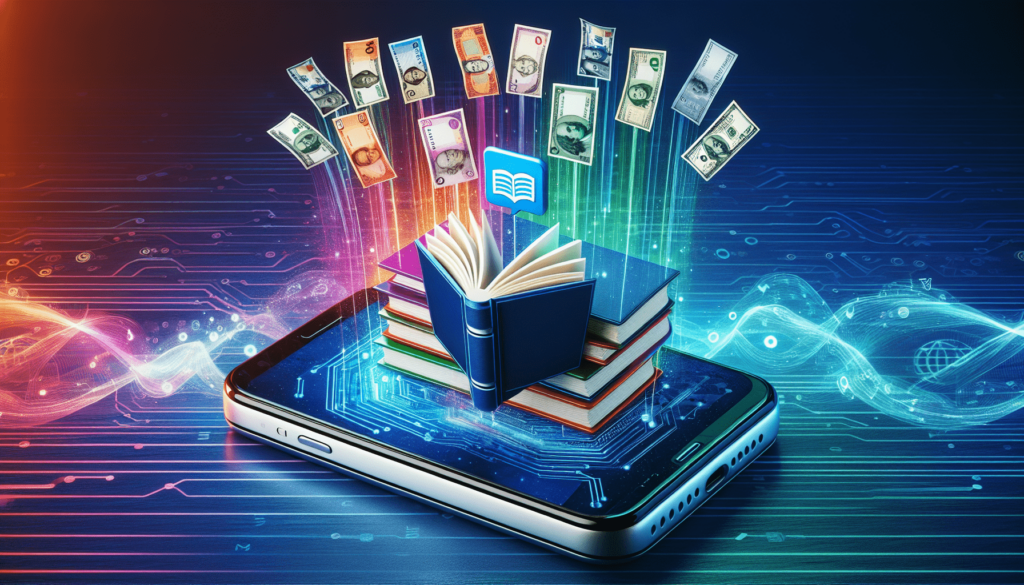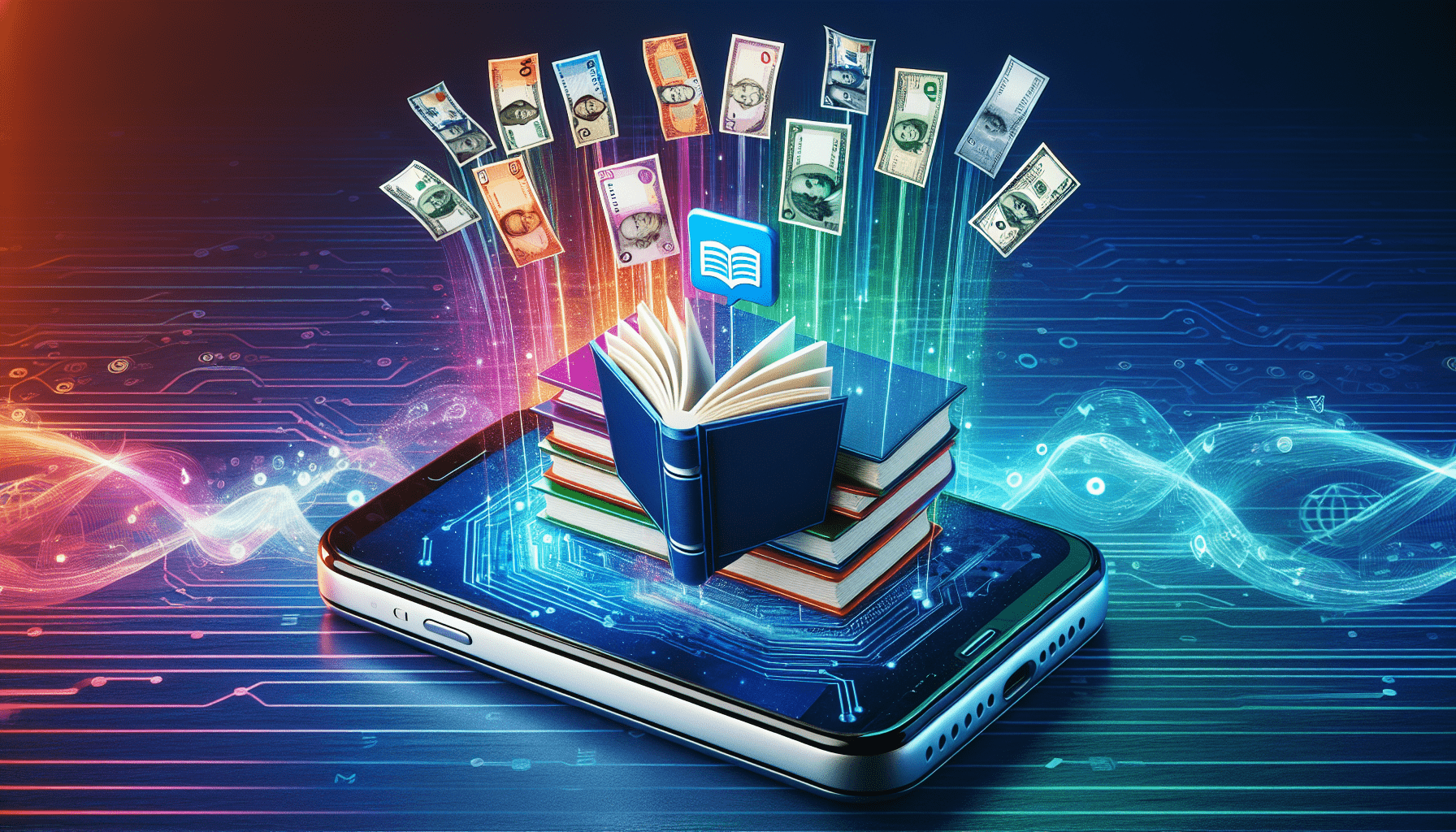Looking to make money by developing educational apps? Look no further! In this article, we are excited to share with you some innovative money-making strategies that can help you capitalize on your app development skills. With the ever-growing demand for educational apps, there is no shortage of opportunities to connect with potential users and monetize your creations. So, if you’re ready to explore the possibilities and boost your profitability, keep reading to discover some game-changing strategies for success.
Freemium Model

Unlock Earning Power: My $7 Mega Link Secret Revealed!
Offer a basic version of the app for free
One effective strategy that educational app developers can employ to monetize their apps is the freemium model. This model entails offering a basic version of the app for free, allowing users to experience its core functionalities without any cost. By providing this free version, developers can attract a large user base and generate significant brand awareness.
Charge users for additional features or premium content
To enhance the revenue potential of the freemium model, educational app developers can offer additional features or premium content that can be purchased within the app. These features can be designed to enhance the user’s learning experience or provide advanced functionalities beyond what the basic version offers. By offering these valuable additions for a fee, developers can tap into the willingness of users to invest in their educational journey.
In-app Purchases
Provide users with the option to purchase virtual goods or currency within the app
In-app purchases are another effective way to generate revenue from educational apps. Developers can offer users the option to purchase virtual goods or currency within the app, providing them with a sense of progression and customization. These virtual goods can include items such as additional levels, characters, or enhanced learning materials, creating opportunities for users to engage with the app further while contributing to the financial success of the developer.
Offer additional levels, characters, or items for sale
To entice users into making in-app purchases, educational app developers can continuously expand their offerings. By adding new levels, introducing unique characters, or releasing exclusive items for sale, developers can create a sense of excitement and exclusivity. This nurtures an environment where users are motivated to invest in these additional elements, thus boosting the app’s profitability while enhancing user satisfaction.
Subscription Model
Implement a recurring payment system
The subscription model is a widely used strategy in the app industry, and it can be highly lucrative for educational app developers. By implementing a recurring payment system, developers can offer users access to all the features and content within the app for a monthly or annual fee. This model ensures a steady stream of revenue and allows developers to continuously provide value to their subscribers.
Life-Changing: How a Simple Link Brought Me Financial Freedom!
Grant users access to all app features for a monthly or annual fee
Through the subscription model, educational app developers can grant users unrestricted access to all the app’s features and content for a recurring fee. This model is especially beneficial for apps that offer a wide range of educational materials or services, as users are more likely to appreciate the convenience and comprehensive learning experience provided by access to all features. By attracting a consistent subscriber base, developers can build a sustainable revenue stream and allocate resources to ongoing app development and improvement.
Advertisements
Integrate ads into the app
Advertisement integration is a popular monetization method utilized by educational app developers. By integrating ads strategically within the app’s interface, developers can generate revenue based on the number of ad impressions or clicks they receive. Advertisements can be displayed between transitions, during loading screens, or in non-intrusive banner formats, ensuring that users can engage with the app while still being exposed to relevant promotional content.
Earn revenue based on the number of ad impressions or clicks
When integrating ads into an educational app, developers can partner with ad networks or affiliate programs to earn revenue based on the number of ad impressions or clicks generated by their app’s users. By gathering insights from user demographics and preferences, developers can select ads that align with their app’s educational focus, enhancing the relevancy and effectiveness of the advertisements while maximizing revenue potential.
Sponsorships
Partner with educational organizations or brands
By establishing partnerships with educational organizations or well-known brands, educational app developers can explore sponsorships as a monetization strategy. These sponsorships can involve monetary support or collaborations where the app features specific educational material or branded content. By leveraging the credibility and reach of these organizations or brands, developers can unlock new revenue streams while providing their app users with valuable learning resources and engaging experiences.
Offer in-app sponsorships or collaborations
Within the app itself, educational app developers can provide opportunities for sponsorships or collaborations on a smaller scale. This can range from allowing brands or organizations to have their logo or content featured in specific sections of the app, to partnering with experts in the field to create and host educational webinars or workshops. By highlighting these partnerships, developers can not only generate revenue but also establish themselves as trusted platforms for educational content.
In-app Rewards

Daily Payday From Your Couch? Try now for the cost of a cup of coffee!
Reward users with virtual goods or currency for completing certain actions within the app
In-app rewards are an effective way to incentivize user engagement and generate revenue simultaneously. Developers can offer users virtual goods or currency as a reward for completing certain actions within the app, such as completing a lesson or achieving a milestone. These rewards create a sense of achievement and progression for users while providing an opportunity for developers to offer additional rewards that can be purchased with real money, thereby driving revenue growth.
Users can purchase additional rewards with real money
To further capitalize on the concept of in-app rewards, developers can allow users to purchase additional rewards with real money. This gives users the option to expedite their progress or unlock exclusive content by making in-app purchases. By offering valuable rewards that enhance the learning experience or provide competitive advantages, developers can cater to the preferences of a diverse user base and generate additional revenue through these purchases.
Data Monetization
Collect and analyze user data
Educational app developers have the opportunity to collect and analyze valuable user data, which can serve as a lucrative source of revenue. By implementing data analytics tools, developers can gather insights into user behavior, preferences, and learning patterns. This data can be utilized to improve the app’s functionalities, personalize user experiences, and identify trends and gaps within the education sector.
Sell anonymized data to market research companies or educational institutions
To monetize the collected user data, educational app developers can sell anonymized data to market research companies or educational institutions. This data can be used by these entities to gain valuable insights into educational trends, student preferences, or optimized learning methodologies. By ensuring strict data privacy and anonymization protocols, developers can minimize privacy concerns while capitalizing on the value of the data they have collected.
Licensing and White Labeling
License your app to schools, educational publishers, or other developers
Licensing and white labeling present an opportunity for educational app developers to generate revenue by allowing schools, educational publishers, or other developers to use their app. By licensing the app to these entities, developers can establish mutually beneficial partnerships and gain access to broader user bases. Additionally, licensing can be a means to showcase the capabilities of the app and attract potential investors or collaborators.
Shocking! This one link can pay you time and time again!
Offer customization and branding options for a fee
To make the licensing and white labeling process more appealing to potential partners, educational app developers can offer customization and branding options for a fee. This allows schools or educational publishers to tailor the app to meet their specific requirements and align it with their branding guidelines. By providing these customization options, developers can create additional revenue streams while empowering partners to deliver an app experience that resonates with their target audience.
Crowdfunding
Create a crowdfunding campaign to support app development
Crowdfunding has emerged as a popular way to secure financial support for various projects, including educational app development. By creating a crowdfunding campaign, developers can reach out to a wide audience and offer exclusive perks or early access to app features as rewards for backers. Through this approach, developers can not only generate the necessary funding but also build a dedicated community of supporters who are invested in the success of the app.
Offer exclusive perks or early access to app features for backers
To entice potential backers and encourage their financial support, educational app developers can offer exclusive perks or early access to app features as rewards. These perks can include limited edition merchandise, personalized learning plans, or direct engagement with the development team. By providing enticing rewards, developers can foster a sense of exclusivity and appreciation among their supporters while fueling the financial resources needed for ongoing app development and improvement.
Partnerships and Collaborations
Team up with other educational app developers or content creators
Collaboration can be a game-changer for educational app developers, enabling them to leverage shared resources, expertise, and user bases to maximize revenue potential. By teaming up with other educational app developers or content creators, developers can combine their skills and knowledge to create more comprehensive and impactful educational experiences. Joint marketing efforts, cross-promotion, and revenue sharing opportunities are just a few potential benefits of these partnerships.
Combine resources, expertise, and user bases to maximize revenue
Through partnerships and collaborations, educational app developers can combine their core competencies, user bases, and resources to unlock new revenue streams. These collaborations can be instrumental in creating synergistic app offerings, expanding market reach, and accessing previously untapped audiences. By sharing the workload, developers can focus on delivering high-quality content and experiences while maximizing the financial potential of their educational apps.
In summary, educational app developers have a multitude of innovative strategies at their disposal to monetize their apps effectively. Whether through the freemium model, in-app purchases, subscriptions, advertisements, sponsorships, in-app rewards, data monetization, licensing and white labeling, crowdfunding, or partnerships and collaborations, developers can diversify their revenue streams while providing valuable educational resources and experiences to their users. By adopting a user-centric approach and continually evolving their monetization strategies, educational app developers can thrive in the ever-expanding digital education landscape.

